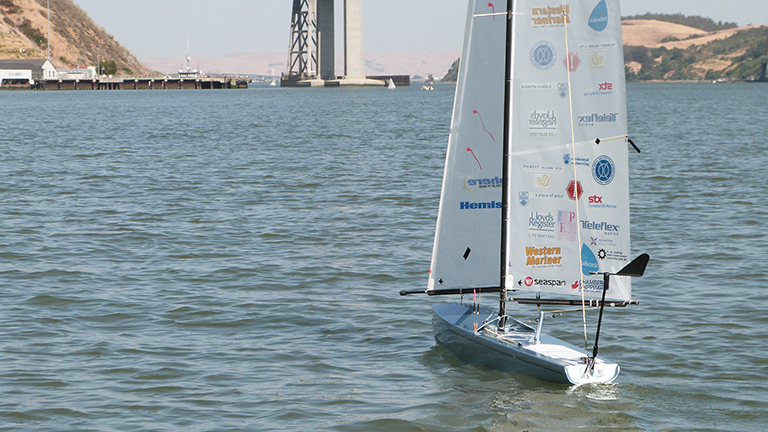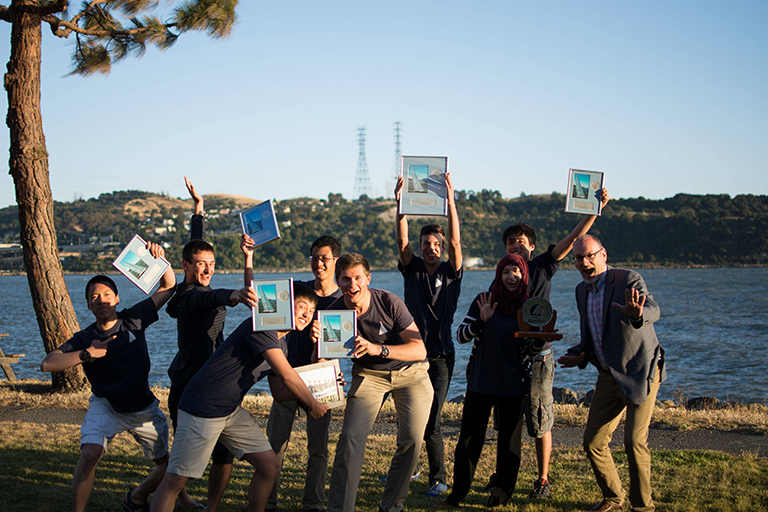Transatlantic Engineering
If the first 10 kilometers of coastal waves and challenges don’t get you, what’s another 2,800 kilometers of deep blue water?
Buoyed by their third straight victory at the 2014 International Robotic Sailing Regatta held in Vallejo, California, the UBC SailBots engineering crew – land lubber humans and a 5.5-metre autonomous robotic craft – has become the most successful team in the competition’s history. With the U.S. Naval Academy trailing in second place (again), the UBC craft successfully traversed the challenging 10-kilometer route, besting the 20-knot winds to the competitors’ dismay.
The team’s next and far bigger challenge is set for August 2015 when the UBC crew and its still officially un-christened nautical bot will attempt the first unmanned, automated crossing of the Atlantic Ocean.
Launch point: St. John’s, Newfoundland. Expected landfall: Dingle, Ireland. Between the two, an estimated three weeks and almost 3,000 kilometers. To help avoid floating debris, other vessels, whales and other trip-ending bumps that have ended other robotic sailing crafts’ trans-Atlantic attempts, the UBC craft is armed with a sleepless infra-red ‘eye’ and detection/avoidance FLIR technology from the UBC Department of Civil Engineering and the guidance of senior instructor Dr. Nobo Yonemitsu.
Read more about
Student LearningRead more Student Learning stories:
- Speak Up, Stand Out
- Webby Worthy
- Immerse, Learn, Reflect
- The Pharma Is In
- Telling the Untold Story
- Fold, Spindle, Mutate
- Bita Imam, Student Extraordinaire
- New Leaders, Better Futures
- UBC and the Special Olympics
- Top Researchers Recognized: UBC’s Young Researchers Shine
- Wade Davis: Between Two Worlds
- Plugging Into Technology, Teaching and the Future
- A Strong Start
- A New Beginning
- Big Mind on Campus
- Scholars In Track Shoes
- UBC Okanagan Votes In Favour of New Library and Learning Space
- Polar Bear Swim Brings Out UBC Spirit
- Sauder Degree Doubles Down
- New Rhodes Scholar Packs For Oxford
- Seeking: Global Change Makers
- Cristiano Ronaldo Joins the Class
- An Extrudingly Good Idea
- Framing the Future
- A Rural Cure
Related Content
What’s another 2,800 kilometers of deep blue water?
Campus
Vancouver


Comments are closed, but trackbacks and pingbacks are open.